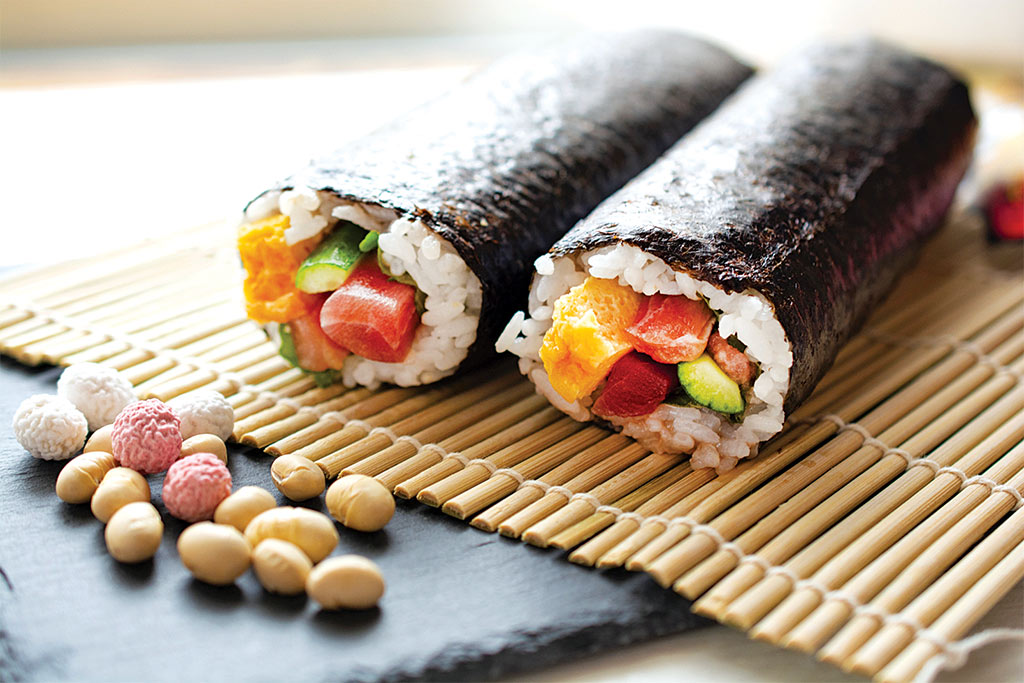

In a bid to maximise profits, the food industry giants tend to exploit traditional customs.
At the beginning of February in Japan, setsubun (literally meaning “division of the seasons”) is celebrated. It was once regarded as New Year. The tradition originated in China with the aim of chasing away evil spirits and preventing other spirits entering during the transition from one season to the next. These rituals are still practised in every Shinto shrine in the country. Roasted soya beans are scattered to drive the spirits out of the house, and front doors are decorated with a sprig of holly leaves and a grilled sardine head to stop evil spirits from entering.
The ritual also includes certain dishes that are specially eaten to mark the occasion. As with most celebrations, they are based on traditional Japanese cuisine with each ingredient having a symbolic significance. The dishes differ depending on the region, but, recently, one has become particularly well known: ehomaki.
Ehomaki, introduced from the west of the country, was originally just one among all the other dishes eaten specially during the festival. In the last 30 years, this kind of futomaki (a very large maki made with numerous ingredients) has spread throughout the Archipelago through large-scale advertising campaigns in mini-markets and supermarkets as it is an easyto-market low-cost dish. It is very popular and has become a particularly profitable business for retailers who are all trying to increase their share of the market – in 2022, sales of ehomaki rose to 190 million GBP. The problem is that this dish is a variety of sushi and does not keep well, and it has led to an explosion of food waste scandals in recent years. The major brands have therefore had to make an effort to curtail some of this wastage.
As long as we prepare them ourselves or they are produced locally, food linked to ritual practices, whether seasonal, religious or regional, enriches our lives with symbolism and brings us closer to our history and our roots. Once the food industry takes control of them, these dishes simply become an excuse to sell more at a particular time of year. If, like the Twelfth Night Cake, they could last for a whole month, there would undoubtedly be less wastage, but ehomaki are only eaten on the day of the festival. What has not been sold on the day is consigned to the dustbin. This purely commercial logic is contrary to the original spirit of these ritual meals, which, for the most part, exist to create happiness, with the help and support of nature.
The day of setsubun, for example, can be celebrated with fukumame (lucky beans), by eating the same number of these roasted soya beans as your age in years. Fukucha (good luck tea) – also made of roasted soya beans with added salted plums and a little kombu seaweed – sardines or even soba noodles… All this traditional and healthy food can be prepared easily at home without having to rush to the supermarket to buy ready-made food. You can still respect tradition without being seduced by advertising slogans, and be happy just giving thanks to the earth for its gifts.
Sekiguchi Ryoko


